Ditapis dengan

Managerial Decision Making
- Edisi
- -
- ISBN/ISSN
- -
- Deskripsi Fisik
- 240 p
- Judul Seri
- -
- No. Panggil
- SC TXT MAN k
- Edisi
- -
- ISBN/ISSN
- -
- Deskripsi Fisik
- 240 p
- Judul Seri
- -
- No. Panggil
- SC TXT MAN k
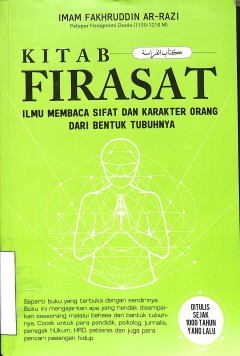
Kitab Firasat ilmu membaca sifat dan karakter orang dari bentuk tubuhnya
- Edisi
- 2015
- ISBN/ISSN
- -
- Deskripsi Fisik
- 207 p.
- Judul Seri
- -
- No. Panggil
- TXT LE IMA f C.1
- Edisi
- 2015
- ISBN/ISSN
- -
- Deskripsi Fisik
- 207 p.
- Judul Seri
- -
- No. Panggil
- TXT LE IMA f C.1
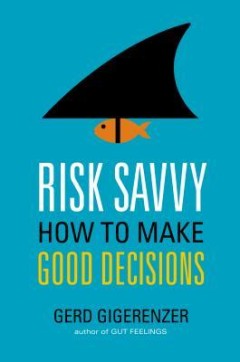
Risk savvy how to make good decisions
In Risk Savvy, Gigerenzer reveals that most of us, including doctors, lawyers, financial advisers, and elected officials, misunderstand statistics much more often than we think, leaving us not only misinformed, but vulnerable to exploitation. Yet there is hope. Anyone can learn to make better decisions for their health, finances, family, and business without needing to consult an expert or a su…
- Edisi
- -
- ISBN/ISSN
- 978-0-670-02565-7
- Deskripsi Fisik
- 322p ; 24cm.
- Judul Seri
- -
- No. Panggil
- TXT MG GIG r

De-commoditizing change management: A call for the re-positioning of change
- Edisi
- -
- ISBN/ISSN
- -
- Deskripsi Fisik
- -
- Judul Seri
- -
- No. Panggil
- ATC MG BRO d
- Edisi
- -
- ISBN/ISSN
- -
- Deskripsi Fisik
- -
- Judul Seri
- -
- No. Panggil
- ATC MG BRO d
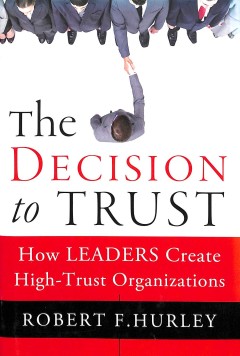
The decision to trust : how leaders create high-trust organization
A proven model to create high-performing, high-trust organizations Globally, there has been a decline in trust over the past few decades, and only a third of Americans believe they can trust the government, big business, and large institutions. In The Decision to Trust, Robert Hurley explains how this new culture of cynicism and distrust creates many problems, and why it is almost impossible to…
- Edisi
- -
- ISBN/ISSN
- 978-1-118-07264-6
- Deskripsi Fisik
- 245 p.; 24 cm.
- Judul Seri
- -
- No. Panggil
- LC 658.4036 HUR t

Don't Sweat the Small Stuff : Jangan Membuat Masalah Kecil Jadi Masalah Besar…
Banyak hal dalam hidup ini yang sebenarnya hanya masalah kecil, tapi kita memperlakukannya sebagai masalah besar. Sebenarnya, dengan membentuk perspektif baru bahwa masalah-masalah itu memang kecil, kita akan mempunyai lebih banyak waktu untuk memikirkan halhal yang benar-benar merupakan masalah besar. Dengan gaya tulisan yang mudah dipahami, buku ini menyajikan caracara membentuk perspektif y…
- Edisi
- Cet. Ketiga
- ISBN/ISSN
- 978-602-03-1180-7
- Deskripsi Fisik
- xix, 234 p., ; illus : 21 cm
- Judul Seri
- -
- No. Panggil
- TXT MG CAR d

Knowledge management in public administration
- Edisi
- Volume 6, No. 3, 2002, pp. 224-239
- ISBN/ISSN
- 1367-3270
- Deskripsi Fisik
- 16 p.
- Judul Seri
- -
- No. Panggil
- ATC MG WII k
- Edisi
- Volume 6, No. 3, 2002, pp. 224-239
- ISBN/ISSN
- 1367-3270
- Deskripsi Fisik
- 16 p.
- Judul Seri
- -
- No. Panggil
- ATC MG WII k

Supply chain logistics risks from the back room to the board room
Risks and uncertainties are ever more noted and factored into decision making today, and those stemming from supply chains are prominent in the competitiveness and viability of companies and organizations. The idea that every supply chain is made up of five internal chain/network constructs is presented, and these are physical, financial, informational, relational, and innovational. Further, fo…
- Edisi
- Vol. 34 No. 5, 2004
- ISBN/ISSN
- -
- Deskripsi Fisik
- 10 p.
- Judul Seri
- International Journal of Physical Distribution & Logistics Management
- No. Panggil
- ATC LO CAV s

A multi-criteria evaluation of container terminal technologies applying the C…
Over the recent years, the usage of containers has dramatically increased; subsequently, port container terminals annually serve more and more intensive flows, which leads to the necessity to find the ways of increasing terminal performance in order to achieve that a growing number of containers would be expeditiously served. The minimization of container handling duration in a terminal would r…
- Edisi
- Volume 27(4): 364–372
- ISBN/ISSN
- 1648-3480
- Deskripsi Fisik
- 10 p.
- Judul Seri
- Transport
- No. Panggil
- ATC LO BAR a

Use of analytic hierarchy process (AHP) for selection of 3PL providers
The purpose of this paper is to present a decision model for selecting a third party logistics (3PL) provider, because international business can be a complex undertaking. It is a multi-criteria problem, with alternative ways to weigh the importance of the chosen criteria.
- Edisi
- Vol. 24 No. 1, 2013 pp. 28-51
- ISBN/ISSN
- 1741-038X
- Deskripsi Fisik
- 26 p.
- Judul Seri
- Journal of Manufacturing Technology Management
- No. Panggil
- ATC MG DAI u

Use of analytic hierarchy process (AHP) for selection of 3PL providers
The purpose of this paper is to present a decision model for selecting a third party logistics (3PL) provider, because international business can be a complex undertaking. It is a multi‐criteria problem, with alternative ways to weigh the importance of the chosen criteria.
- Edisi
- Vol. 24 Issue: 1, pp.28-51
- ISBN/ISSN
- -
- Deskripsi Fisik
- 26 p.
- Judul Seri
- Journal of Manufacturing Technology Management
- No. Panggil
- ATC LO DAI u

Talent management decision making
The paper sets out to understand the key issues that emerge in the context of decision making.
- Edisi
- -
- ISBN/ISSN
- -
- Deskripsi Fisik
- 18 p.
- Judul Seri
- -
- No. Panggil
- ATC MG VAI t

Uncertainty, the critical basis of risk management
The objective of this paper is to scan the extent of uncertainty and hesitation in the development of plans and strategy.
- Edisi
- VOL. 11 NO. 6 2009, pp. 42-55
- ISBN/ISSN
- 1463-6689
- Deskripsi Fisik
- 16 p.
- Judul Seri
- Foresight
- No. Panggil
- ATC MG RIC u

Developing a decision-making framework for implementing purchasing synergy: a…
The purpose of this paper is to report on research undertaken within a European-based airline services firm. As a result of pressures within the airline industry the firm embarked on a cost reduction programme, recognising the need to achieve more synergy from its procurement spend, located in semi-autonomous business units (BUs). The paper describes sequentially the two stages of the author’…
- Edisi
- Vol. 37 No. 1, 2007
- ISBN/ISSN
- -
- Deskripsi Fisik
- 27 p.
- Judul Seri
- International Journal of Physical Distribution & Logistics Management
- No. Panggil
- ATC LO DUD d

Developing a decision-making framework for levels of logistics outsourcing in…
The purpose of this paper is to present a decision-making framework for outsourcing levels of logistics activities. These are: execution level of basic activities (such as transportation, warehousing); value-added activities; planning and control level of activities (such as transportation and inventory management); and strategic decision-making level of activities (distribution network design).
- Edisi
- Vol. 40 No. 5, 2010
- ISBN/ISSN
- -
- Deskripsi Fisik
- 23 p.
- Judul Seri
- International Journal of Physical Distribution & Logistics Management
- No. Panggil
- ATC LO OMT d

Possibilistic group support system for pricing and inventory problems
- Edisi
- Vol. 13 Iss 2 pp. 68 - 76
- ISBN/ISSN
- -
- Deskripsi Fisik
- 10 p.
- Judul Seri
- Logistics Information Management
- No. Panggil
- ATC LO RAG p
- Edisi
- Vol. 13 Iss 2 pp. 68 - 76
- ISBN/ISSN
- -
- Deskripsi Fisik
- 10 p.
- Judul Seri
- Logistics Information Management
- No. Panggil
- ATC LO RAG p

The implications of shareholder value planning and management for logistics d…
Much of the literature in the field of logistics and supply management is concerned with the role that should be taken by business activities to add value for the customer and the shareholder. One of the problems currently under discussion is how this may be achieved. Discusses the issues underlying shareholder value management and planning. It proposes that value drivers are identified and …
- Edisi
- Vol. 29 No. 4, 1999, pp. 240-258.
- ISBN/ISSN
- -
- Deskripsi Fisik
- 21 p .
- Judul Seri
- International Journal of Physical Distribution & Logistics Management
- No. Panggil
- ATC LO WAL t

A fuzzy AHP based integer linear programming model for the multi-criteria tra…
The purpose of this research is to develop a holistic approach to maximize the customer service level while minimizing the logistics cost by using an integrated multiple criteria decision making (MCDM) method for the contemporary transshipment problem. Unlike the prevalent optimization techniques, this paper proposes an integrated approach which considers both quantitative and qualitative facto…
- Edisi
- Vol. 23 No. 1, 2012
- ISBN/ISSN
- -
- Deskripsi Fisik
- 23 p.
- Judul Seri
- The International Journal of Logistics Management
- No. Panggil
- ATC LO WIL a

The logistics of information management within an e-Government context
Developments in the world of distributed computing have made possible the successful integration of diverse information systems working in different environments. Electronic government (eGovernment) provides governmental stakeholders with a wealth of information stored at the various entities in the organisation. Decision makers are often overloaded with the amount of information that they rece…
- Edisi
- Vol. 23 No. 6, 2010
- ISBN/ISSN
- -
- Deskripsi Fisik
- 32 p.
- Judul Seri
- Journal of Enterprise Information Management
- No. Panggil
- ATC LO IRA t

System dynamics for humanitarian operations
The purpose of this paper is to illustrate the appropriateness of system dynamics (SD) methodology as a tool for humanitarian decision makers to understand the effect of their decisions on humanitarian operations. The authors seek to present the initial stages and preliminary findings of a SD model used to analyze a well‐defined subsystem of humanitarian operations, field vehicle fleet manage…
- Edisi
- Vol. 1 Issue: 1, pp.78-103
- ISBN/ISSN
- -
- Deskripsi Fisik
- 29 p.
- Judul Seri
- Journal of Humanitarian Logistics and Supply Chain Management
- No. Panggil
- ATC LO BES s

Analytical modeling of third party service provider selection in lead logisti…
The purpose of this paper is to model the choice parameters for selection of third party logistics service providers in global lead logistics provider (LLP) environments.
- Edisi
- Vol. 5 No. 3, 2010
- ISBN/ISSN
- -
- Deskripsi Fisik
- 15 p.
- Judul Seri
- Journal of Modelling in Management
- No. Panggil
- ATC LO SIN a

A sustainable urban logistics dashboard from the perspective of a group of op…
The purpose of this paper is to propose a sustainable dashboard for evaluating the sustainable performance of urban delivery systems from the perspective of operational logistics managers, one of the categories of stakeholders given less consideration by public authorities in their quest for consensus.
- Edisi
- Vol. 38 Iss 10 pp. 1068 - 1085
- ISBN/ISSN
- 2040-8269
- Deskripsi Fisik
- 20 p.
- Judul Seri
- Management Research Review
- No. Panggil
- ATC LO MOR a

A satisficing model of outsourcing
To develop a prescriptive model that provides effective guidance in the early stages of outsourcing processes, while taking into the decisionmakers’ bounded rationality.
- Edisi
- Vol. 11 Iss 5 pp. 444 - 455
- ISBN/ISSN
- 1359-8546
- Deskripsi Fisik
- 15 p.
- Judul Seri
- Supply Chain Management: An International Journal
- No. Panggil
- ATC LO BOE a

A comparative study of three different SCM approaches
A comparative study of three different approaches on a hypothetical supply chain model is presented. The three approaches investigated are: independent; semi‐integrated; and integrated. In the independent approach, it is assumed that decisions are made independently at three different levels. Decisions are assumed to be made at two different levels in the semi‐integrated approach. In the in…
- Edisi
- Vol. 32 Iss 7 pp. 532 - 555
- ISBN/ISSN
- 0960-0035
- Deskripsi Fisik
- 26 p.
- Judul Seri
- International Journal of Physical Distribution & Logistics Management
- No. Panggil
- ATC LO SUN a

A decision-making approach for investigating the potential effects of near so…
Near sourcing is starting to be regarded as a valid alternative to global sourcing in order to leverage supply chain (SC) responsiveness and economic efficiency. The present work proposes a decision-making approach developed in collaboration with a leading Italian retailer that was willing to turn the global store furniture procurement process into near sourcing.
- Edisi
- Vol. 5 No. 2, 2012 pp. 100-120
- ISBN/ISSN
- 1753-8297
- Deskripsi Fisik
- 22 p.
- Judul Seri
- Strategic outsourcing : an international journal
- No. Panggil
- ATC LO CAG a

Applying the strategy-structure-performance paradigm to the supply chain envi…
The paper extends a central paradigm of the strategy literature to the supply chain environment to foster a better understanding of the elements characterizing strategic decisions that lead to supply chain structural development and performance.
- Edisi
- Vol. 16 No. 1, 2005
- ISBN/ISSN
- -
- Deskripsi Fisik
- 27 p.
- Judul Seri
- The International Journal of Logistics Management
- No. Panggil
- ATC LO STA a

Slacks-based efficiency measures for modeling environmental performance
We develop two slacks-based efficiency measures for modeling environmental performance on the basis of environmental DEA technology. Of the two measures, one is a composite index with a higher discriminating power for modeling economic–environmental performance, and the other can be used to estimate the impacts of environmental regulations. We apply the proposed measures to model the CO2 emis…
- Edisi
- -
- ISBN/ISSN
- -
- Deskripsi Fisik
- 9 p.
- Judul Seri
- -
- No. Panggil
- ATC MG POH s

A new fast, reliable filtering method for multiple criteria decision making
This paper aims to introduce a new method for the evaluation and selection (filtering) of alternatives in a complex multi-criteria decision environment.
- Edisi
- Vol. 49 No. 5, 2011
- ISBN/ISSN
- -
- Deskripsi Fisik
- 15 p.
- Judul Seri
- Management Decision
- No. Panggil
- ATC MG WAL a
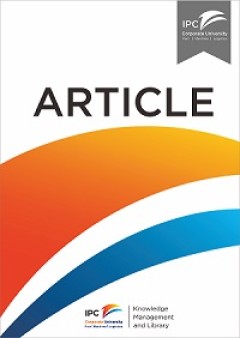
Visionary entrepreneurial leadership in the aircraft industry : the boeing co…
In the early twenty-first century organization scholars and managers face an economic outlook full of daunting challenges. With investors, workers, and other stakeholders distressed and hostile toward corporate executives and boards due to recent corporate scandals, the future for many industries and firms appears grim. In what ways can business history help corporate managers and new venture…
- Edisi
- Vol. 14 Iss 1 pp. 39 - 54
- ISBN/ISSN
- 1751-1348
- Deskripsi Fisik
- 18 p.
- Judul Seri
- Journal of Management History
- No. Panggil
- ATC LE DIN v

Analysis of consumer characteristics which influence the determinants of buyi…
The aim is to discover the significance of the motives that lead to differences in consumers' decision making and also to identify the characteristics of consumers which influence the types of motive that enable them to buy. Results of the research show that availability and quality'' of the products are perceived by consumers as significant motives for their buying decisions in conjunction…
- Edisi
- Volume 14 . Number 3 . 2001
- ISBN/ISSN
- -
- Deskripsi Fisik
- 8 p.
- Judul Seri
- Logistics Information Management
- No. Panggil
- ATC LO NIS a

Revenue management in road-based freight transportation: Impacts of uncertain…
Freight carriers operating in a spot-market environment are faced with uncertain future capacity demand, actual revenues, and properties of freight items. They require information about the expected future consumption of limited capacity to derive suitable request acceptance decisions. The purpose of this paper is to present a new idea to improve the handling of inaccurate information on the we…
- Edisi
- Vol. 42 Issue: 4, pp.388-403
- ISBN/ISSN
- -
- Deskripsi Fisik
- 17 p.
- Judul Seri
- International Journal of Physical Distribution & Logistics Management
- No. Panggil
- ATC LO KOP r

Predictive business – fresh initiative or old wine in a new bottle
The purpose of this paper is to present a conceptual analysis of the theoretical and managerial bases and objectives of predictive business. Predictive business refers to operational decision-making and the development of business processes on the basis of business event analysis. It supports the early recognition of business opportunities and threats, better customer intimacy and agile reactio…
- Edisi
- Vol. 47 No. 10, 2009 pp. 1595-1609
- ISBN/ISSN
- -
- Deskripsi Fisik
- 17 p.
- Judul Seri
- Management Decision
- No. Panggil
- ATC LO JAL p

Packaging, marketing, logistics and the environment: are there trade-offs?
Identifies, via a mail survey of UK marketing executives, who makes the sales packaging (i.e. primary packaging) decision within the company, and the extent to which these individuals perceive trade‐offs between the traditional marketing and logistical functions of a sales package, and environmental pressures to reduce, recycle and reuse packaging. Finds that the primary function of sales p…
- Edisi
- Vol. 26 Issue: 6, pp.60-72
- ISBN/ISSN
- -
- Deskripsi Fisik
- 17 p.
- Judul Seri
- International Journal of Physical Distribution & Logistics Management
- No. Panggil
- ATC LO PRE p

Outsourcing strategies for apparel manufacture: a case study
The redesign of a product supply chain, in terms of production, cost and delivery capabilities can be effectively accomplished by mapping, analyzing and simulating the changes in the supply chain prior to implementation. The case being discussed pertains to the apparel industry in the USA. The beginning of 2005 marked the end of a 30-year old quota on the apparel market in the USA. This has…
- Edisi
- Vol. 19 No. 1, 2008 pp. 73-91
- ISBN/ISSN
- -
- Deskripsi Fisik
- 22 p.
- Judul Seri
- Journal of Manufacturing Technology Management
- No. Panggil
- ATC LO KUM o

Model and approach of fuzzy bilevel decision making for logistics planning pr…
This study aims to develop a decision making model and approach for logistics planning problem which naturally involves two or more decision units at a hierarchical structure. Such a decision problem in practice often involves uncertain and imprecise factors with the parameters of a bilevel decision model, either in the objective functions or constraints.
- Edisi
- Vol. 20 No. 2, 2007 pp. 178-197
- ISBN/ISSN
- -
- Deskripsi Fisik
- 27 p.
- Judul Seri
- Journal of Enterprise Information Management
- No. Panggil
- ATC LO ZHA m

Marketing services to satisfy internal customers
Industrial marketing is generally viewed from the vantage point of firms marketing to other firms. Yet organizations devote extensive resources to situations where managers market their capabilities to other units within the same firm. Presents a case study of industrial health and safety to emphasize internal marketing concepts that managers and staff professionals should use to strengthen t…
- Edisi
- Vol. 8 Issue: 4, pp.22-27
- ISBN/ISSN
- -
- Deskripsi Fisik
- 8 p.
- Judul Seri
- Logistics Information Management
- No. Panggil
- ATC LO HAR m

Make vs buy vs partnership in distributing commodities: a case study and a me…
This paper deals with the decision making about the strategic alternatives for distributing a commodity – the bulk cement – characterised by an extremely high incidence of the transportation costs. It is based on the case of Italcementi Group (ITC), the largest European producer of cement, leader in Italy with a share higher than 30 per cent and growing abroad through acquisitions and for…
- Edisi
- Vol. 11 Issue: 2, pp.112-120
- ISBN/ISSN
- -
- Deskripsi Fisik
- 10 p.
- Judul Seri
- Integrated Manufacturing Systems
- No. Panggil
- ATC LO SPI m

Information technology is an enabling factor affecting supply chain performan…
The purpose of this paper is to identify the success factors for supply chain in Indian small- and medium-scale enterprises (SMEs) and establish a causal relationship among them. In the present scenario, the SMEs are under huge pressure to achieve the supply chain competitive advantage and to improve operation and logistic effectiveness and, at the same time, remain tractable to the demand unce…
- Edisi
- Vol. 11 Issue: 1, pp.269-287
- ISBN/ISSN
- -
- Deskripsi Fisik
- 22 p.
- Judul Seri
- Journal of Modelling in Management Information technology is an enabling factor affecting
- No. Panggil
- ATC LO LEE i

Evaluation of third-party logistics (3PL) providers by using a two-phase AHP …
Third-party logistics (3PL) provider selection has gained great attention in logistics management literature. The purpose of this paper is to provide a good insight into the use of a-two-phase analytical hierarchy process (AHP) and technique for order preference by similarity to ideal solution (TOPSIS) approach that is a multi-criteria decision-making methodology in the evaluation of 3PL provid…
- Edisi
- Vol. 16 No. 5, 2009 pp. 588-604
- ISBN/ISSN
- -
- Deskripsi Fisik
- 20 p .
- Judul Seri
- Benchmarking: An International Journal
- No. Panggil
- ATC LO PER e

Evaluation of alternative logistics operations for the national supply of an …
Describes the analysis of the logistics system of a supplier of anhydrous sodium sulphate to the Australian market. This examination considered the total cost and customer service implications of the present supply of this bulk product from one Canadian and US west coast source, its unloading at three Australian ports and subsequent distribution to customers in major Australian markets. Exami…
- Edisi
- Vol. 28 Issue: 5, pp.382-395
- ISBN/ISSN
- -
- Deskripsi Fisik
- 15 p.
- Judul Seri
- International Journal of Physical Distribution & Logistics Management
- No. Panggil
- ATC LO GIL e

Customer service in physical distribution: a utility-function approach
Decision analysis in management science employs concepts from economics such as utility functions and indifference curves. A utility function U models the “satisfaction” that a customer obtains from logistics service. Here U depends on two attributes (lead time, fill rate) whose values more directly represent customer service. The shipper can, at additional cost, improve either or both of t…
- Edisi
- Vol. 27 No. 9/10, 1997, pp. 540-558
- ISBN/ISSN
- -
- Deskripsi Fisik
- 21 p .
- Judul Seri
- International Journal of Physical Distribution & Logistics Management
- No. Panggil
- ATC LO LYN c

Behavioural research in logistics and supply chain management
This paper aims to advocate and facilitate undertaking research focused on the effects of human behaviour, judgment and decision making in logistics and supply chain management (SCM).
- Edisi
- Vol. 21 No. 1, 2010 pp. 89-103
- ISBN/ISSN
- -
- Deskripsi Fisik
- 19 p.
- Judul Seri
- The International Journal of Logistics Management
- No. Panggil
- ATC LO TOK b

Hybrid analytical hierarchy process model for supplier selection
This paper aims to propose a new approach called “analytical hierarchy process weighted fuzzy linear programming model (AHP-FLP)” for supplier selection.
- Edisi
- Vol. 108 No. 1, 2008 pp. 122-142
- ISBN/ISSN
- -
- Deskripsi Fisik
- 25 p.
- Judul Seri
- Industrial Management & Data Systems
- No. Panggil
- ATC LO LEN h

Appraisement and selection of third party logistics service providers in fuzz…
The purpose of this paper is to develop a decision‐making procedural hierarchy for evaluation as well as selection of third‐party reverse logistics provider (3PL) under fuzzy environment.
- Edisi
- Vol. 20 No. 4, 2013 pp. 537-548
- ISBN/ISSN
- -
- Deskripsi Fisik
- 14 p.
- Judul Seri
- Benchmarking: An International Journal
- No. Panggil
- ATC LO DAT a

Application of FMCDM model to selecting the hub location in the marine transp…
Hub location selection problems have become one of the most popular and important issues not only in the truck transportation and the air transportation, but also in the marine transportation. The main focus of this paper is on container transshipment hub locations in southeastern Asia. Transshipment is the fastest growing segment of the containerport market, resulting in significant scope to d…
- Edisi
- -
- ISBN/ISSN
- -
- Deskripsi Fisik
- 11 p.
- Judul Seri
- Mathematical and Computer Modelling
- No. Panggil
- ATC LO CHA a

A systems-based approach for city logistics decision making
This paper presents a systems based approach for the city logistics decision making. Using this approach, we present the layout of a simulation model called CILOSIM (CITY‐LOGISTICS‐SIMULATION). CILOSIM encapsulates three sub‐models namely Goods to Vehicle Assignment model, Goods movement model and Impact assessment model. The Goods to vehicle assignment model allocates commodities to vehi…
- Edisi
- Vol. 3 Issue: 2, pp.7-17
- ISBN/ISSN
- -
- Deskripsi Fisik
- 13 p.
- Judul Seri
- Journal of Advances in Management Research
- No. Panggil
- ATC LO PRO a
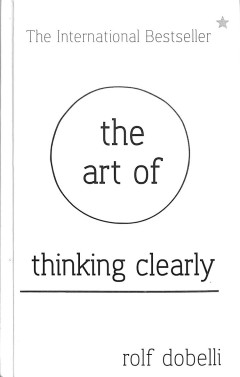
The art of thinking clearly
The Art of Thinking Clearly by world-class thinker and entrepreneur Rolf Dobelli is an eye-opening look at human psychology and reasoning — essential reading for anyone who wants to avoid “cognitive errors” and make better choices in all aspects of their lives. Have you ever: Invested time in something that, with hindsight, just wasn’t worth it? Or continued doing something you knew w…
- Edisi
- -
- ISBN/ISSN
- 978-1-444-75954-9
- Deskripsi Fisik
- x, 326 p, 19 cm ; index
- Judul Seri
- -
- No. Panggil
- LC 658.4036 DOB t
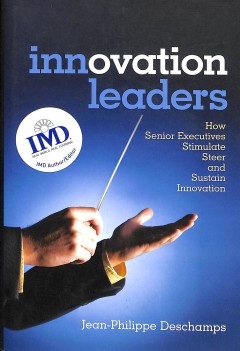
Innovation leaders : how senior executives stimulate steer and sustain innova…
Innovation leaders promote and address the innovation agenda in their company. Through personal conviction or competitive necessity they are obsessed with providing superior value to customers through innovation. They know how to mobilize their staff behind concrete innovation initiatives and do not hesitate to personally coach innovation teams. For innovation to occur leadership has to be coll…
- Edisi
- -
- ISBN/ISSN
- 978-0-470-51524-2
- Deskripsi Fisik
- xxii, 433 p, 24 cm ; index
- Judul Seri
- -
- No. Panggil
- LC 303.34 DES i
 Karya Umum
Karya Umum  Filsafat
Filsafat  Agama
Agama  Ilmu-ilmu Sosial
Ilmu-ilmu Sosial  Bahasa
Bahasa  Ilmu-ilmu Murni
Ilmu-ilmu Murni  Ilmu-ilmu Terapan
Ilmu-ilmu Terapan  Kesenian, Hiburan, dan Olahraga
Kesenian, Hiburan, dan Olahraga  Kesusastraan
Kesusastraan  Geografi dan Sejarah
Geografi dan Sejarah